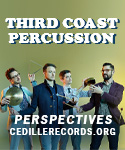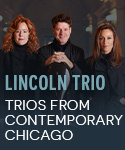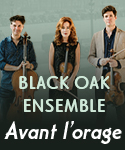It’s a cliché to liken a performer traversing a large cycle of works to a “journey”, yet Hilary Hahn’s set of Eugène Ysaÿe’s six unaccompanied violin sonatas accomplishes precisely that. Her effortless virtuosity, her fusion of structure and spontaneity, her wide palette of nuances, her generous yet controlled and smartly variegated use of vibrato and gift for characterization all help to bring vivid life and meaning to these works.
To hear what I mean, compare, for example, the intensity and specificity of Hahn’s articulation of the double stops in the Sonata No. 1 finale to Ilya Kaler’s etude-like efficiency, or her first movement’s volatile underpinnings in contrast to James Ehnes’ classical reserve. Her painstakingly-voiced second-movement Fugue sounds as if it’s emerging from two instruments and two players.
If I prefer Tai Murray’s brisker and suppler approach to the Second sonata’s first movement (notably in the dynamic contrasts between the quotes from Bach’s E major Prelude and Ysaÿe’s rejoinders), Hahn’s slightly slower pacing of the persistent toccata-like writing enables her to make the composer’s slurs, accents, and staccato marking all the more distinct. The eloquent animation with which she shapes the third-movement variations “Dies irae” pizzicato opening is in a class by itself. Nor does she hold back in the frequently played Third sonata; her performance may be the most decisive, fluent, and expressive since the classic Michael Rabin and David Oistrakh recordings.
Hahn also relishes the ferocity in the Fourth sonata’s opening Allemande in ways that leave her more literal competitors in the dust. In the Sarabande she honors Ysaÿe’s request for pizzicato articulation with vibrato, which results in more profile to the lower lines than one usually hears. Perhaps the Fifth sonata is the most musically inventive and original of the six. In the opening L’Aurore, Hahn’s spare vibrato and biting “country fiddler” tone in long sustained phrases provide jarring and effective contrasts to the left-hand pizzicatos. She impressively combines gravitas and abandon in the concluding Danse rustique, although Tai Murray’s faster tempo and clearer-cut phrase delineation arguably comes closer to the composer’s “giocoso” directive.
However, for No. 6’s unabashed and hard-hitting pyrotechnics alone, Hahn’s take-no-prisoners confidence will keep aspiring young violinist hotshots humble for years. That said, the young Frank Peter Zimmermann’s technically comparable yet less unrelenting Warner Classics recording is a bit easier on the ears, but if Hahn wants to channel Heifetz’s ghost, so be it!
I enjoyed reading Hahn’s delightful booklet notes about how this project came together, and you will too. Hahn’s Ysaÿe cycle merits top honors alongside Murray, Zimmermann, and Oscar Shumsky, and benefits from superior engineering. Enthusiastically recommended.
































